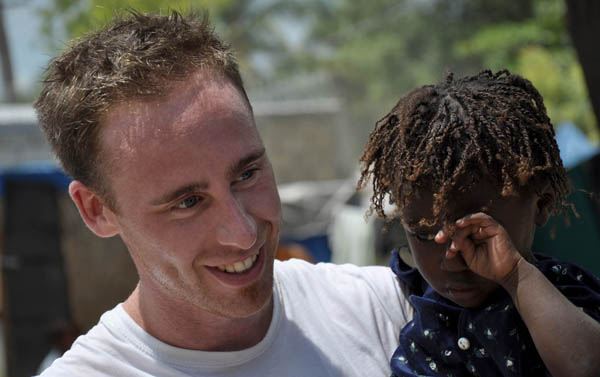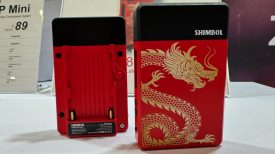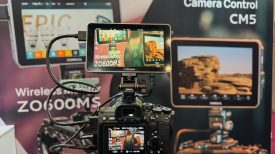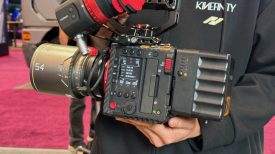Haïti september 2010 from Tom Palmaers on Vimeo.
One year on from the Haiti earthquake, people naturally want to know what has happened to its survivors.
A charity event in my city had given its money to an aid organisation called Zen-Flower, which provides creative psychological intervention for children in vulnerable situations, such as those who have experienced natural disasters. So I chose to focus on the work of a young group of psychologists from Belgium and the University of Miami who were running a pilot programme in Haiti.

We left in September (having found many tips on this website). I paid my own flight and they provided free accommodation and food. We slept in a children’s village called: Heart for Haiti in Bon Repos, 20 minutes away from Port au Prince city.
Life in a tentcamp in Haiti 2010 from Tom Palmaers on Vimeo.
It was very difficult to film in a hot climate. Sweat dripped from my body every second, even onto the camera. I tried to use a LCDVF loupe but because of the sweat around my eyes, it was impossible to use it.
The sweat also fell right onto the Glidetrack slider, along with dust and sand, which was not ideal for a smooth motion.
For audio the Zoom H1 has worked great. I fitted it with a splitter on the 3.5mm jack so I can use a headphone the same time as feeding the camera with audio.
I switched regularly from film to photography which also made everything difficult.
I have a homemade rig of PVC. I regularly had to unscrew it to take still portraits. It was very hard to decide when to film, when to take a picture, when to use the rig, Glidetrack, Glidecam…
I used vari ND filters to leave the shutter at 1/50th and still have a shallow depth of field. But when making pictures in the tents, I had to screw it off as it was too dark. Many times the filters got dirty because of the sweat and dust.
I also had two bodyguards with me who helped me to carry equipment and with switching – between lenses, or from Glidetrack to shoulder rig, or Glidecam stabilizer.
Editing was done with Macbook pro in late 2010 with EOS plugin in FCP 6.0 grading done with Magic Bullet looks.
Here’s a complete breakdown of my kit:
Canon 5DmkII
Canon 24mm f1.4L II
Canon 50mm f1.4
Canon 85mm f1.8
Canon 16-35mm f2.8L II for wide Glidecam shots
Zoom H1 recorder and Rode Video mic attached to the H1 for interviews
3.5 mini jack with splitter cable for headphones
LitePanels LP-Micro (indoor interview in tent)
LCDVF LCD loupe
Fader ND filters
Self made PVC shoulder rig
Glidetrack (1m)
Glidecam HD2000
Software:
Final Cut Pro
Magic Bullet looks
For more info about my project in Haiti check out www.tompalmaers.be/haiti
In the beginning of March 2011 I will travel back to Port au Prince to make more stories.







